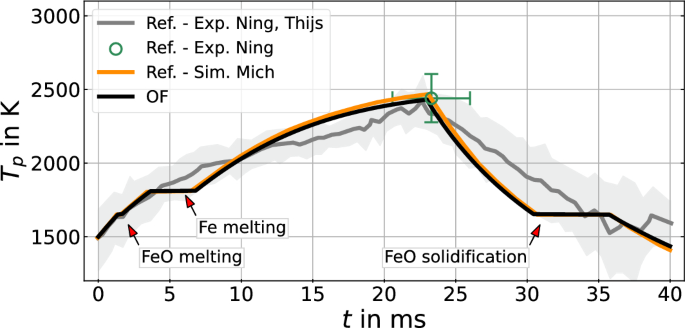Three-dimensional carrier-phase direct numerical simulations (CP-DNS) of reacting iron particle dust clouds in a turbulent mixing layer are conducted. The simulation approach considers the Eulerian transport equations for the reacting gas phase and resolves all scales of turbulence, whereas the particle boundary layers are modelled employing the Lagrangian point-particle framework for the dispersed phase. The CP-DNS employs an existing sub-model for iron particle combustion that considers the oxidation of iron to FeO and that accounts for both diffusion- and kinetically-limited combustion. At first, the particle sub-model is validated against experimental results for single iron particle combustion considering various particle diameters and ambient oxygen concentrations. Subsequently, the CP-DNS approach is employed to predict iron particle cloud ignition and combustion in a turbulent mixing layer. The upper stream of the mixing layer is initialised with cold particles in air, while the lower stream consists of hot air flowing in the opposite direction. Simulation results show that turbulent mixing induces heating, ignition and combustion of the iron particles. Significant increases in gas temperature and oxygen consumption occur mainly in regions where clusters of iron particles are formed. Over the course of the oxidation, the particles are subjected to different rate-limiting processes. While initially particle oxidation is kinetically-limited it becomes diffusion-limited for higher particle temperatures and peak particle temperatures are observed near the fully-oxidised particle state. Comparing the present non-volatile iron dust flames to general trends in volatile-containing solid fuel flames, non-vanishing particles at late simulation times and a stronger limiting effect of the local oxygen concentration on particle conversion is found for the present iron dust flames in shear-driven turbulence.



